58+ Sample Grocery List Templates
-
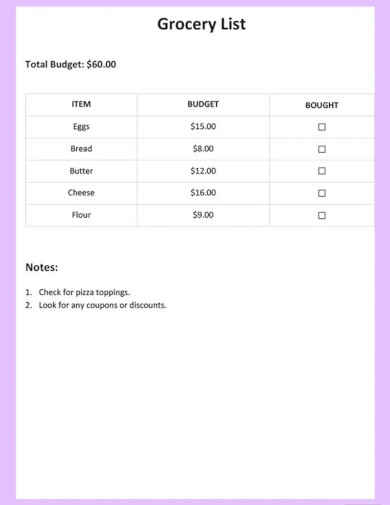
Grocery List Template
download now -
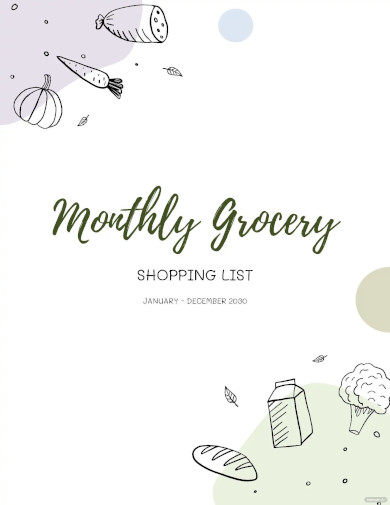
Free Grocery List Template
download now -
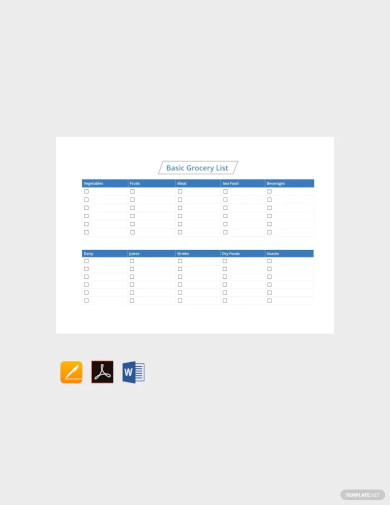
Free Basic Grocery List Template
download now -
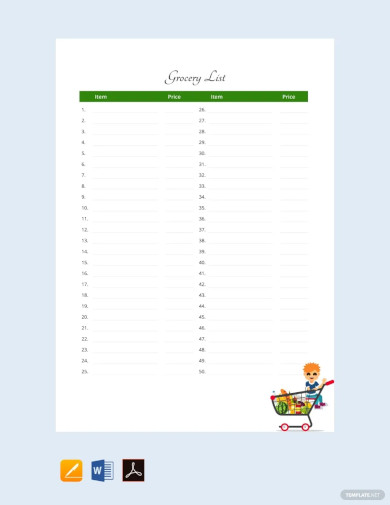
Free Sample Grocery List Template
download now -
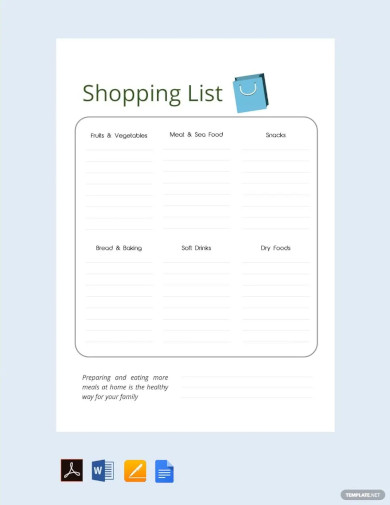
Grocery Shopping List Template
download now -
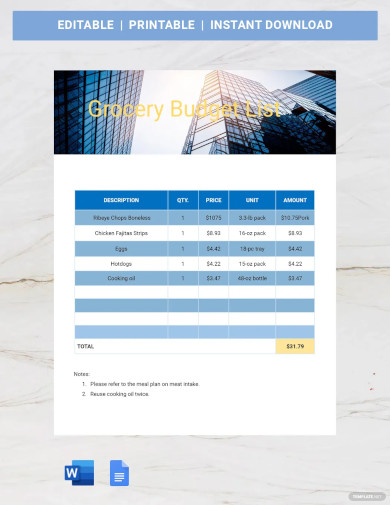
Grocery Budget List Template
download now -
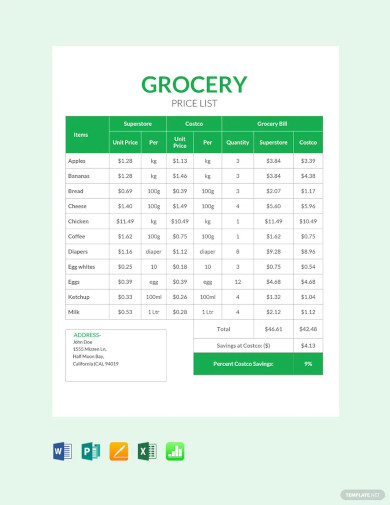
Free Grocery Shop Price List Template
download now -
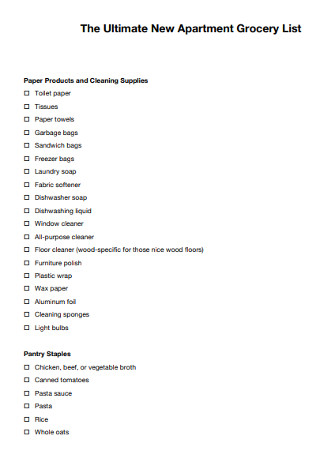
Printable Grocery List
download now -
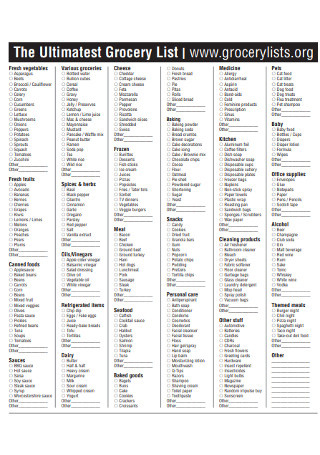
Grocery Budget List
download now -

Blank Diet Grocery List
download now -
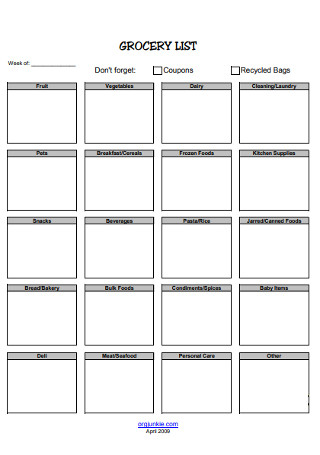
Simple Grocery List
download now -

Basic Grocery List
download now -
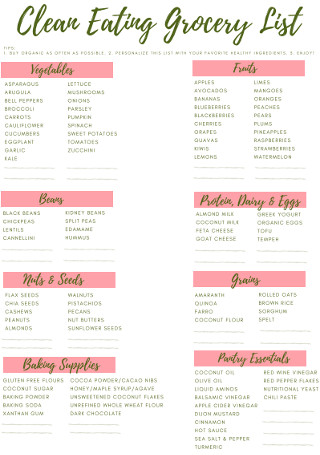
College Grocery List
download now -
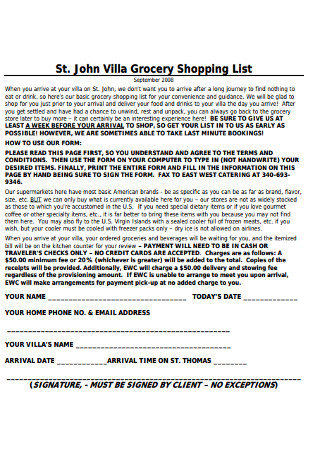
Master Grocery Shopping Lists
download now -
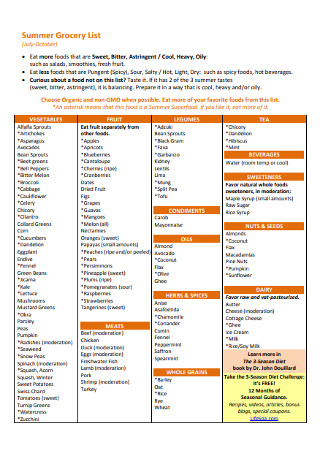
Monthly Grocery List
download now -
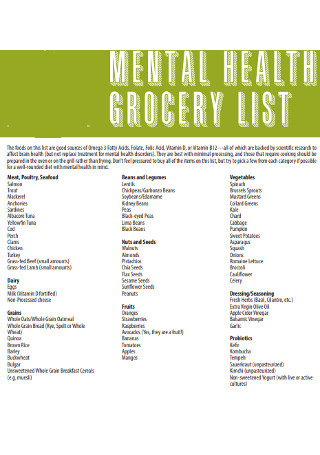
Written Grocery List
download now -
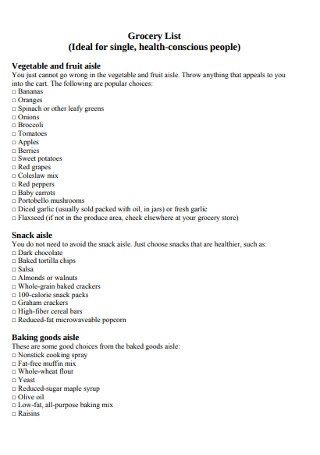
Grocery Handwritten Vegetable List
download now -
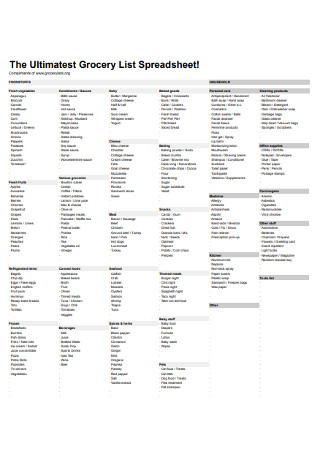
Student Grocery List Spreadsheet
download now -
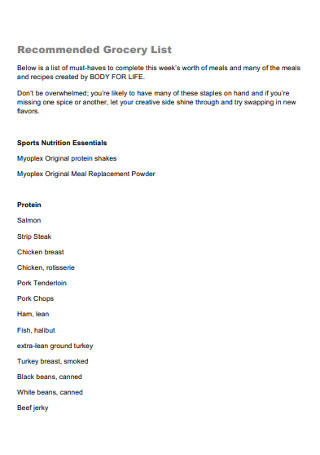
Recommended Cheap Grocery List
download now -
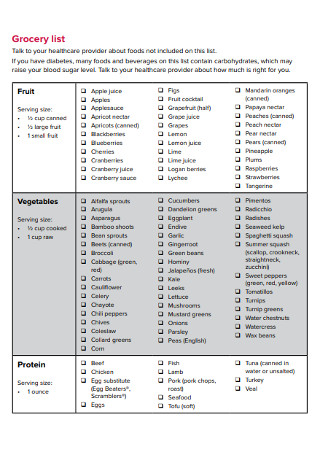
General Low Carb Grocery list
download now -
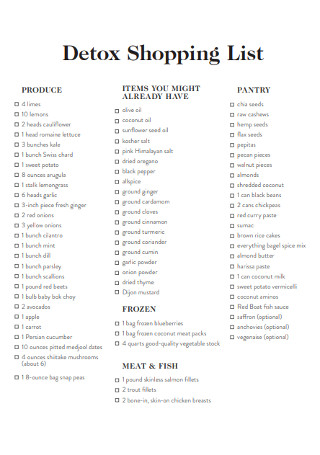
Price Shopping List
download now -
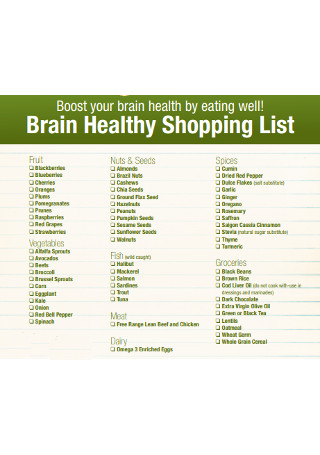
Dinner Shopping List
download now -
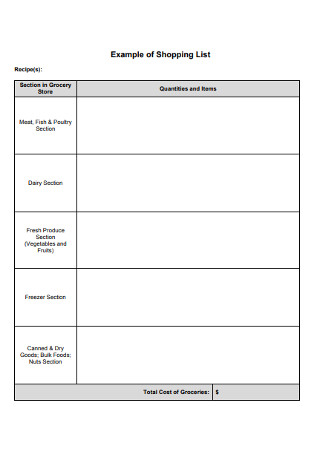
Supermarket Shopping List
download now -
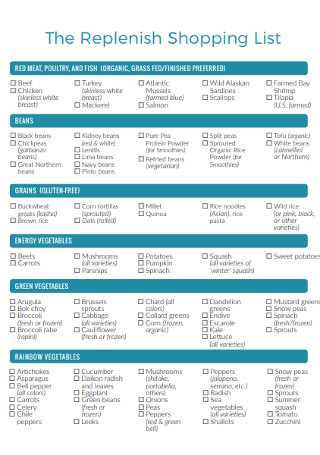
Vegan Shopping List
download now -
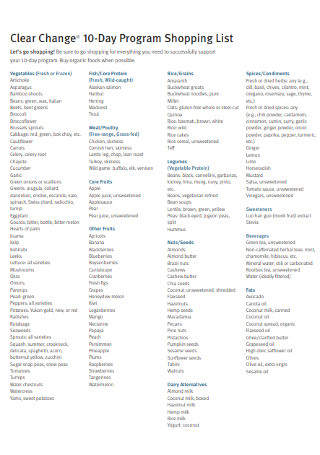
Day Program Shopping List
download now -
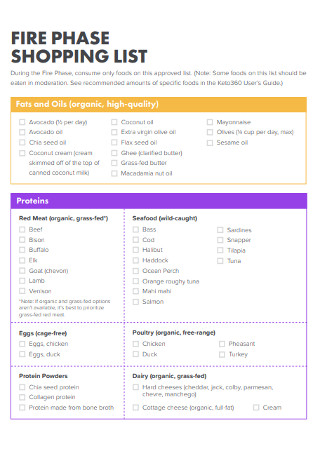
Fire Phase Shopping List
download now -
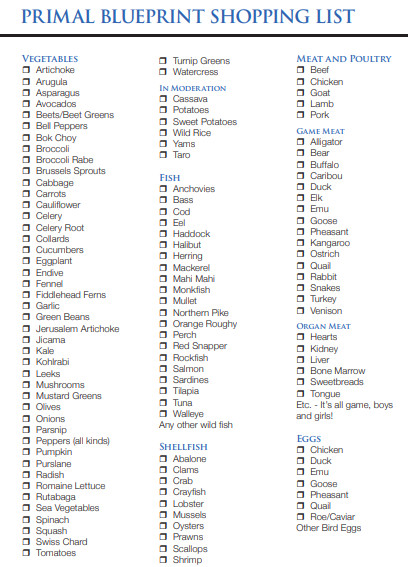
Primal Blueprint Shopping List
download now -
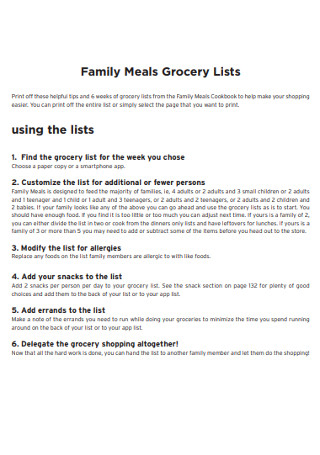
Family Meals Grocery Lists
download now -
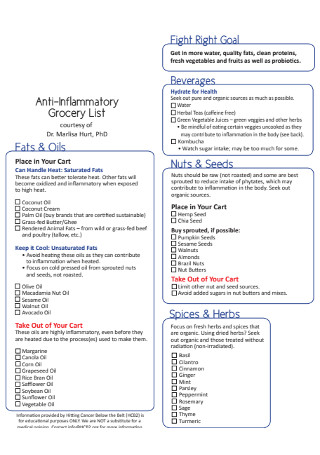
Anti-Inflammatory Grocery List
download now -
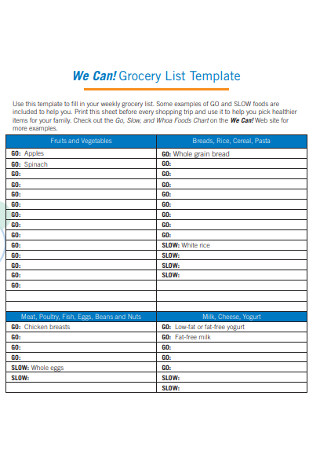
Grocery List Template
download now -
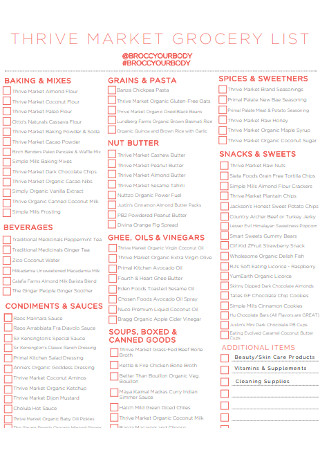
Market Grocery List
download now -
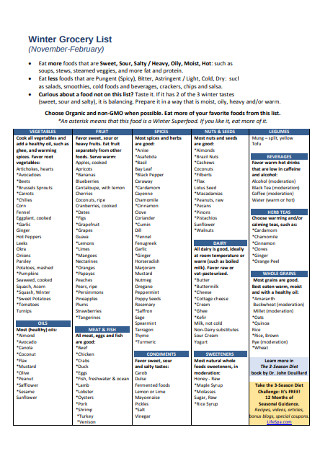
Winter Grocery List
download now -
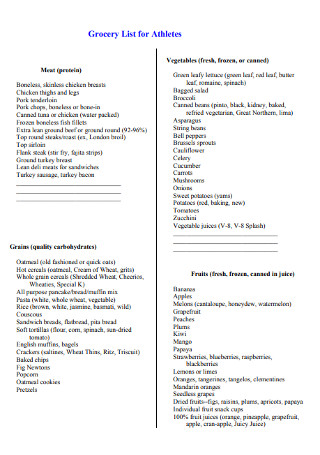
Grocery List for Athletes
download now -
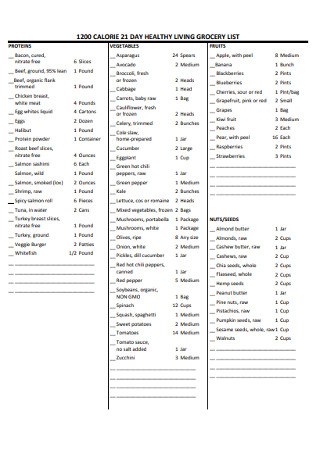
Day Healthy Living Grocery List
download now -

Heart Grocery List
download now -

Grocery List Web Application
download now -
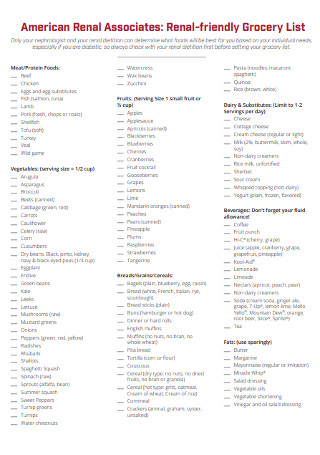
Renal-friendly Grocery List
download now -
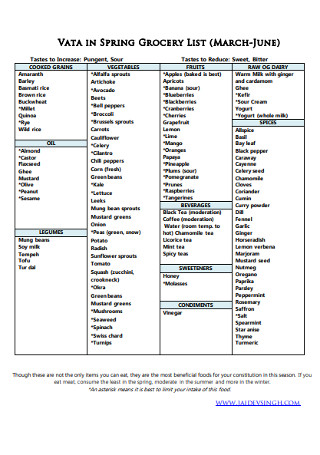
Spring Grocery List
download now -

Sample Grocery Checklist
download now -
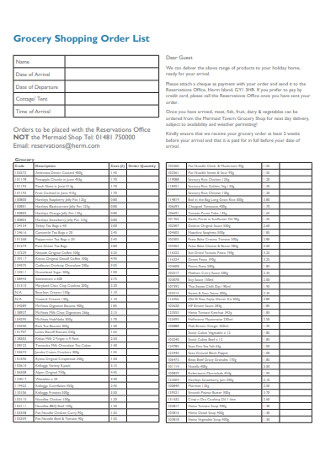
Grocery Shopping Order List
download now -
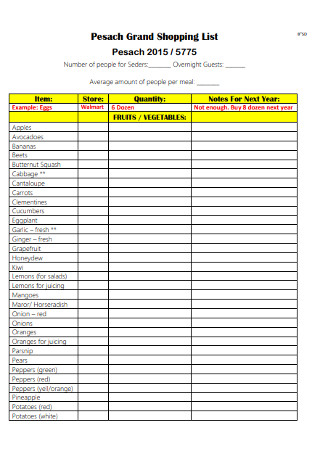
Pesach Grand Shopping Lists
download now -
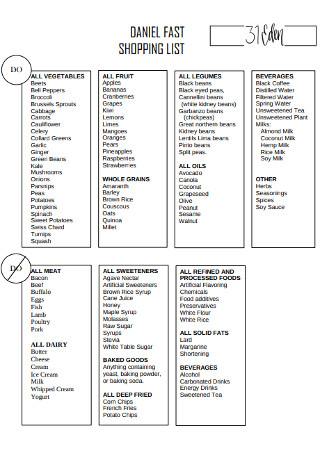
Fast Shopping List
download now -
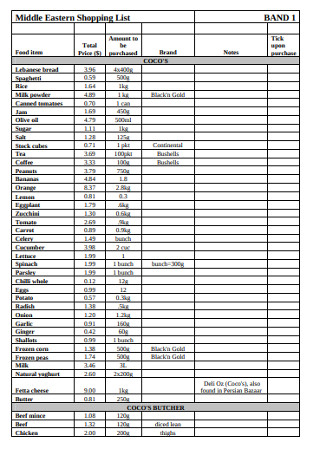
Middle Eastern Shopping List
download now -
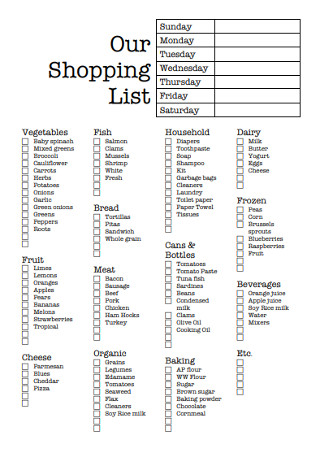
Formal Shopping List
download now -
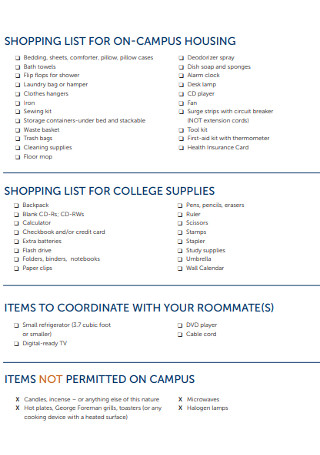
Shopping List on Campus Housing
download now -
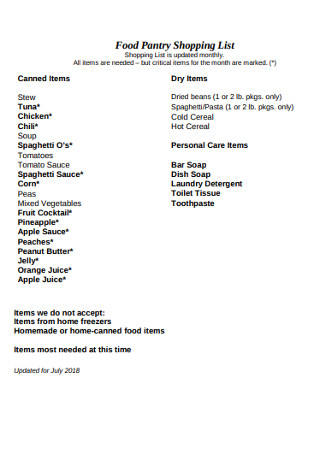
Food Pantry Shopping List
download now -
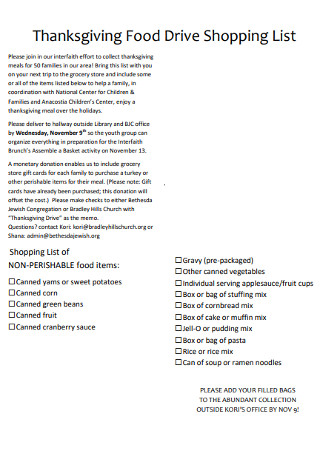
Food Drive Shopping List
download now -
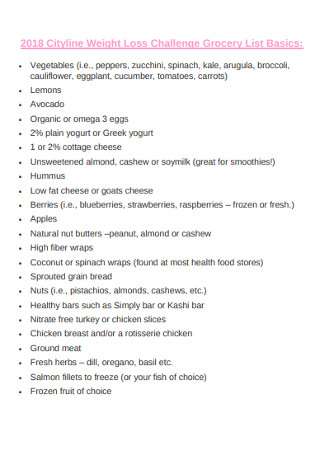
Weight Loss Challenge Grocery List
download now -
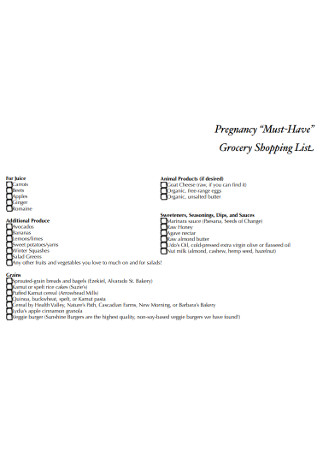
Pregnancy Grocery Shopping List
download now -
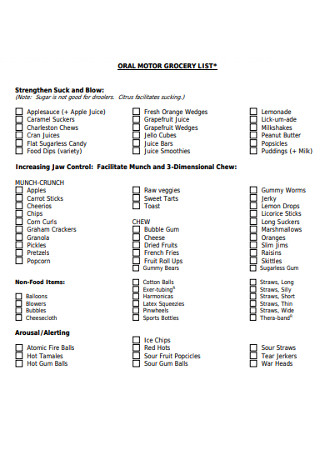
Oral Motor Grocery List
download now -
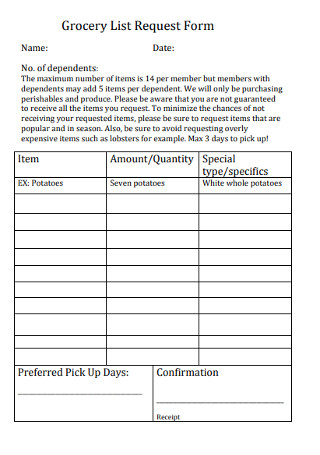
Grocery List Request Form
download now -
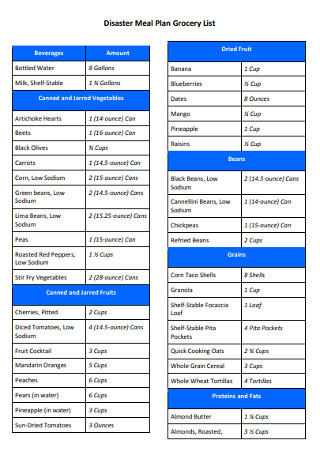
Disaster Meal Plan Grocery List
download now -
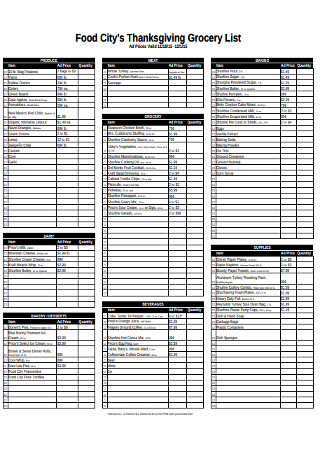
Food City’s Thanksgiving Grocery List
download now -
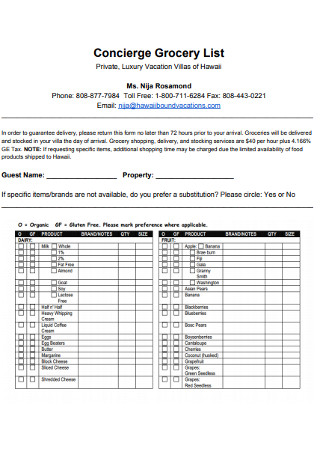
Concierge Grocery List
download now -
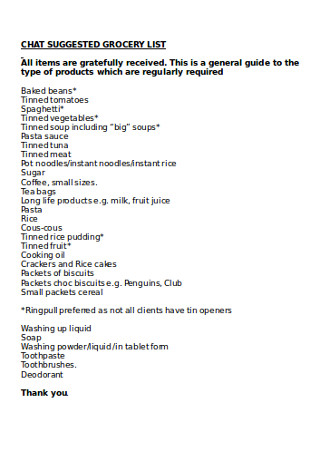
Chat Suggest Grocery List
download now -
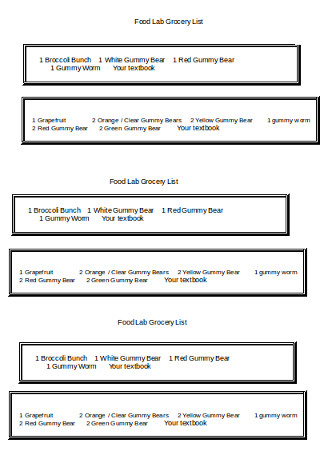
Food Lab Grocery List
download now -
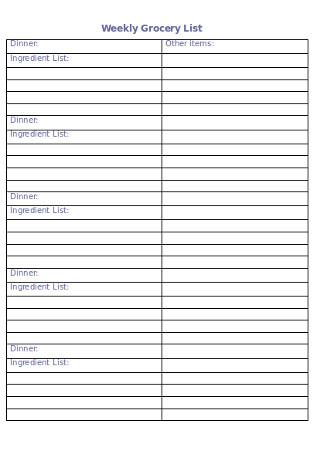
Weekly Grocery List
download now -
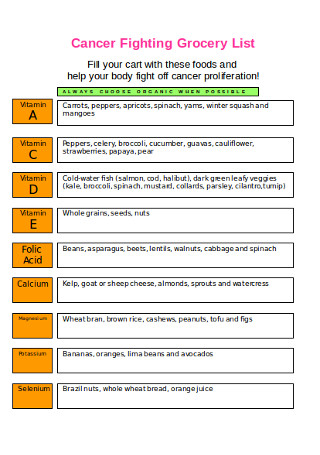
Cancer Fighting Grocery List
download now -

Sample Cheif Grossory List
download now
A grocery store usually has a layout strategized to make shoppers like you lose focus and spend beyond their means and needs. With discounted items and promotional deals of unnecessary grocery items placed strategically near the counter, it’s no wonder that unnecessary things fill grocery carts. With that said, consider the use of a grocery list. This type of list facilitates your grocery shopping by keeping a record of the purchases you need to make while sparing you from making any unwanted expenses.
You can create a grocery list from scratch on a piece of scrap paper. But if you want to create a carefully considered and formed grocery list, download and customize any of our grocery list templates and examples below!
What Is a Grocery List?
A grocery list is a tool used by shoppers to make wise purchases. This type of list is a memory aid for people who find it difficult to remember the things they need to buy. This list is also a guide that helps grocery shoppers avoid the temptation of buying things on impulse. Apart from that, grocery lists are also one way of having a formal strategic planning method. It does not only structure your daily meals, eating habits, and non-food expenditures, but it also allows you to preserve your financial resources.
For individuals who are on the path toward healthy living, grocery lists can help guide them toward their goals. Those strapped on cash can make wise purchases that won’t bust their budget. And those who live far from any grocery store can make the most out of every grocery shopping trip.
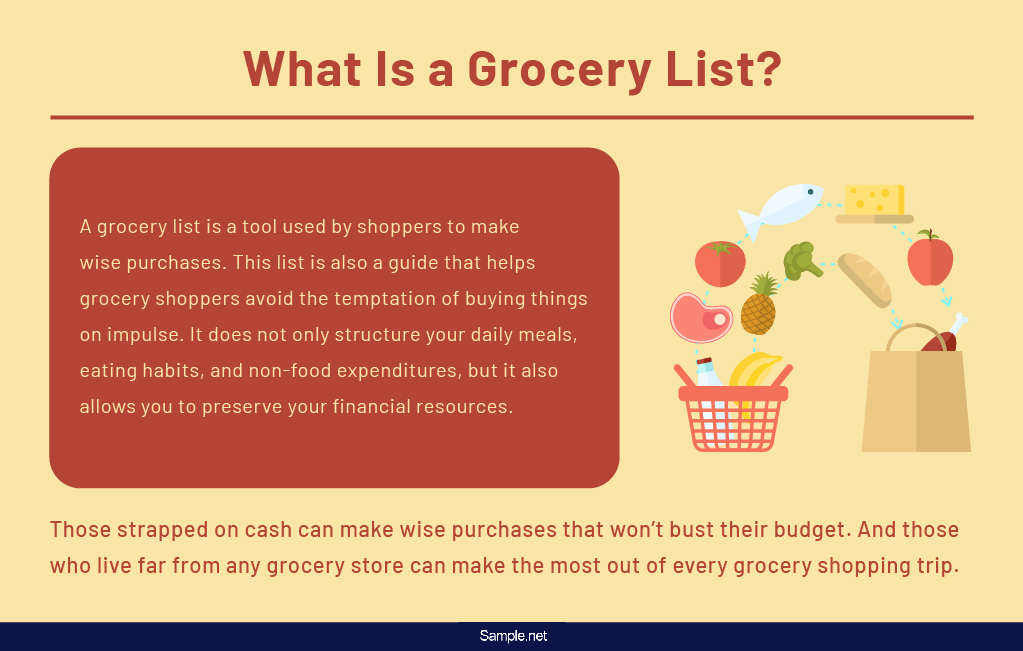
Grocery List Categories
Grocery items vary from one household to another. But to keep an organized list with a mix of healthy food items and non-food items, sorting things out by categories help you shop efficiently and save you from purchasing items on impulse. Below are some suggested basic categories that you may consider incorporating in your grocery list.
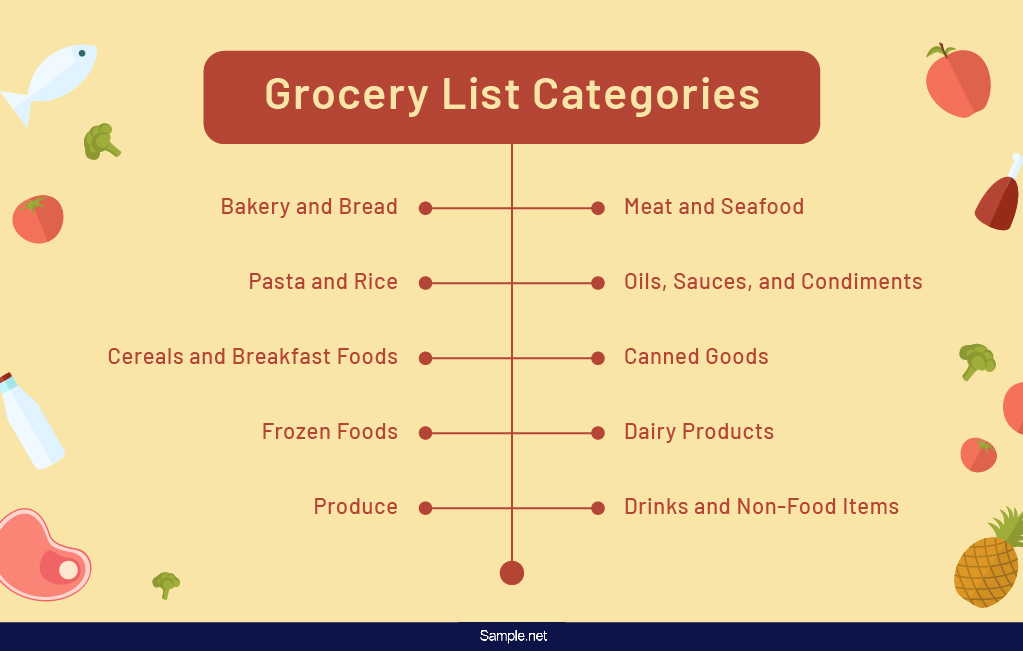
Importance and Benefits of a Grocery List
Grocery lists are more important and beneficial than you think. Think it’s otherwise? Then wait until you find yourself wandering in the grocery store, not knowing what and what not to buy. If you need more convincing, read on the importance and benefits of having a grocery list.
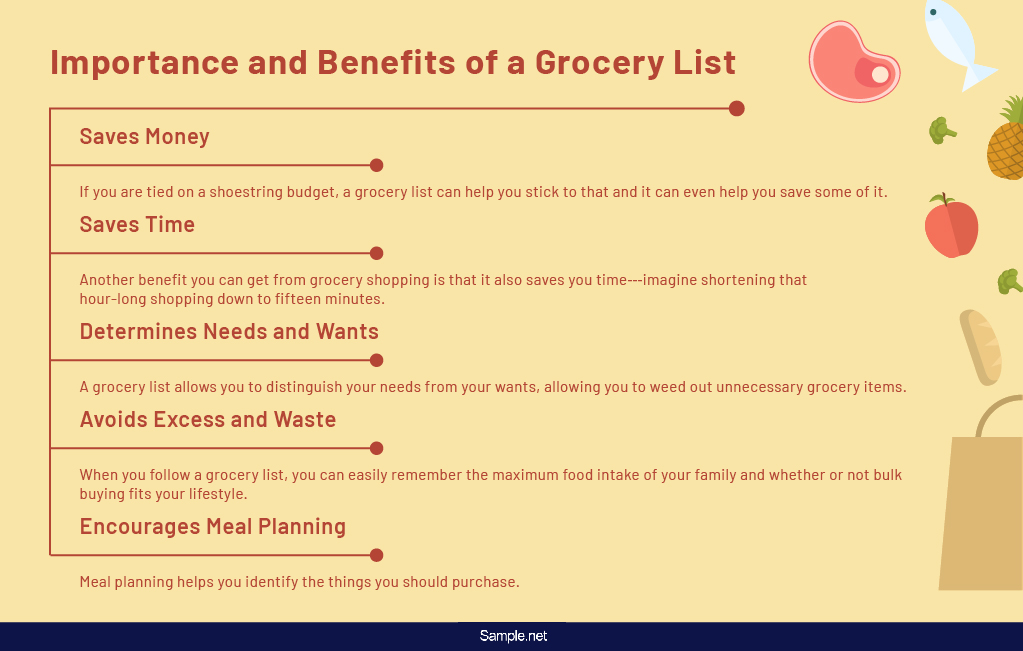
How to Create a Grocery List
The end goals of the following steps are to make your grocery shopping efficient and make you a wise shopper. If you want to achieve the same goals, be sure to follow the steps below.
Step 1: Download a Grocery List Template
As mentioned, you can create a grocery list from scratch on a piece of scrap paper. This kind of grocery list only gets you through a single grocery trip and you can no longer use it the next time around. But if you are among the 32% of US primary household grocery shoppers who make two to three grocery store trips within a week based on a Statista February 2017 survey, then using a grocery list template is encouraged. When you download and make use of any of our list templates above, you can easily customize it according to your needs. You don’t need to worry about getting things out of control since each template contains a ready-made organized format.
Step 2: Create a Meal Plan
If you feel overwhelmed when thinking of what food items you need to purchase, creating a meal plan is highly encouraged. In creating a daily meal plan, planning meals for at least two weeks is ideal so you can limit your number of visits to the grocery store. Once you have a specific meal plan, determine and list down the ingredients. The list of ingredients are not your final list yet; you still need to check your current food stock and see if there are some items in the list that is you still have available at home.
Step 3: Check Your Current Inventory
Check your refrigerator, freezer, pantry, cabinets, and other places where you store food and non-food items to see your current inventory. Take note of these items that are running low, half-used, unused. By knowing these, you would know what you need to buy and what you can put off for your next grocery store trip. Check also the things that you can buy in bulk so you can save money that way, but see to it that it’s not perishable or that you can use it up before it goes bad. Among the things you can buy in bulk are batteries, kitchen and toilet tissues, light bulbs, and other necessities you usually run out of fast.
Step 4: List Items Based on Categories
To make your grocery trips quick and easy, organize your list according to different categories or sections. You can categorize your list according to food groups or how the arrangements of items in the grocery store. Listing things down under categories is one of the best ways you can save time and money. This step is easier for you to accomplish since you already made meal plans and checked your inventory. Add grocery items as you go when you have already decided on the categories that make your grocery shopping more organized.
Step 5: Review
Before you head out and start your grocery shopping, be sure that you have listed everything that you need to purchase at the grocery store. Avoid any possibility of making multiple trips for the next two weeks as it is a waste of money and time. If you are familiar with the prices of each item on your list, you may write this down. Including prices can help if you are on a tight budget and if you need a reminder of your limited grocery allowance.
Dos and Don’ts of a Grocery List
Take notes from the following dos and don’ts to be guided when you create and make the most out of a grocery list.
Do’s
1. Do make meal plans before writing your grocery list.
Planning your meals ahead of time enables you to determine the essential and necessary ingredients that you only need to buy. Whether you are on a tight budget or a strict diet, having a list makes grocery shopping more comfortable and more convenient on your end. Meal planning saves you time and money, encourages you to eat healthy meals, and helps you avoid making any food waste.
2. Do have an inventory of your current supply.
See to it that the only items you need to write down on your list are things that you need to refill or lack. Do not purchase anything that is still available at home. Do not even buy items that are half-used and can last another week or two. Check your food and non-food storage places such as the fridge, freezer, cabinets, cupboard, pantry, and the like and know what you still have.
3. Do make use of your grocery list.
What’s the point of making a grocery list if you are not going to use it anyway? Update its contents before going on a grocery trip because what you might need for the next two weeks might be different from what you currently need. If you create grocery lists but still find it unnecessary, then maybe you should start using it to experience its functionality.
Donts
1. Don’t overwhelm yourself.
A grocery list should serve as the game plan that helps you fight against the temptation of throwing a bunch of useless things into the shopping cart. So, don’t overwhelm yourself and try to perfect your list. Perfection is known as an excuse in disguise and an excuse to procrastinate. That said, you might not end up creating your grocery list in the end. Start with the basics if you are feeling too overwhelmed. Torn between buying and not buying in bulk? Then do not buy in bulk or you’ll only make more problems than solutions.
2. Don’t forget to check your receipts after every trip.
If you are running on a fixed grocery budget, it will be wise to keep track of the prices of the usual items that you usually buy. To do that, you need to keep the receipts of every grocery store trip. In doing so, you can make sure that your estimated total cost is exact or close enough to the actual total amount. Another benefit you can get from keeping your receipt is that you can check whether you were wrongly charged on a particular grocery item.
3. Don’t buy things you can forgo.
Do you need to buy a bunch of kitchen paper towels when you can buy a reusable kitchen towel? Do you have to get that optional ingredient that is only good for a single meal? Do you need to stack up on vegetables that you won’t even need for any of your meal plans? If no is your answer, then go ahead and skip it all. You are not only keeping your grocery budget in check but you also cut down on clutter and save space in your food and non-food storage places.
With the use of a grocery list, you will no longer forget the essential items you need to get during your grocery store trip. And you will no longer have any problems with sticking to your budget anymore. Even if you are now an adult with a lot of responsibilities in your hands, having a grocery list might make you enjoy grocery shopping the same way you used to enjoy it when you were younger.
